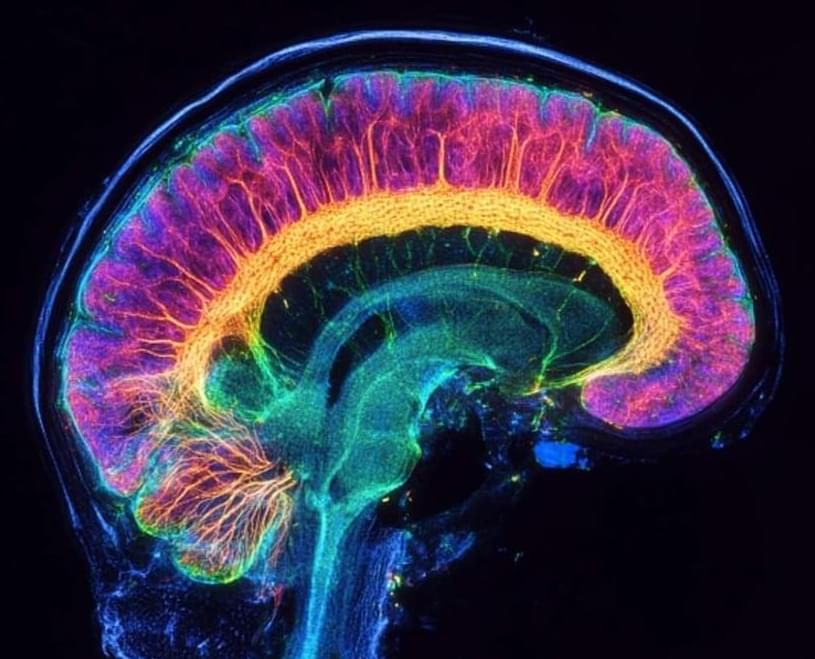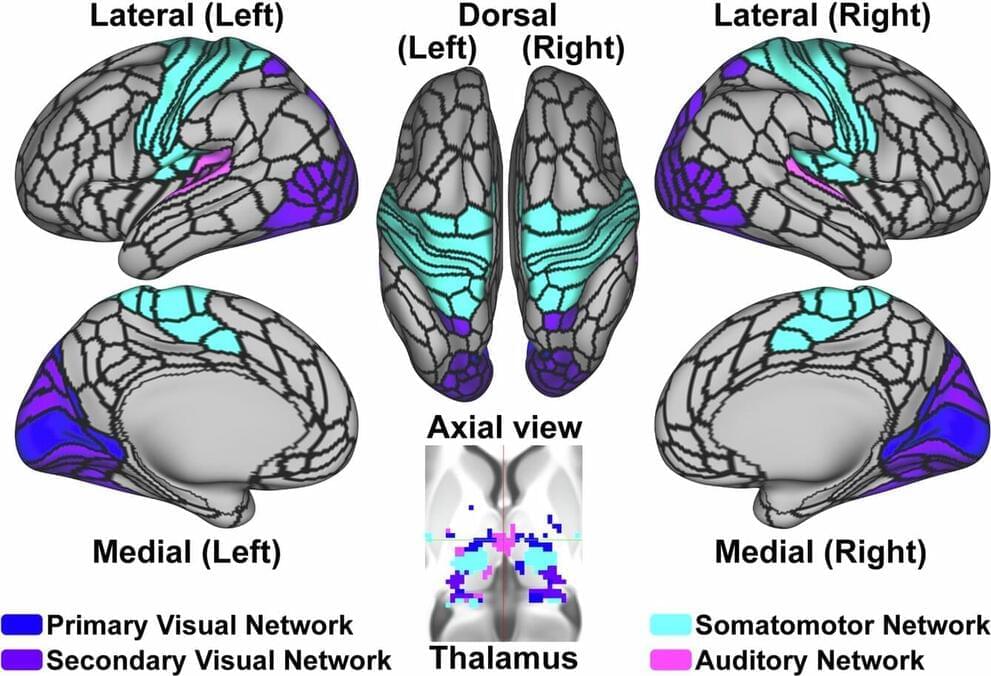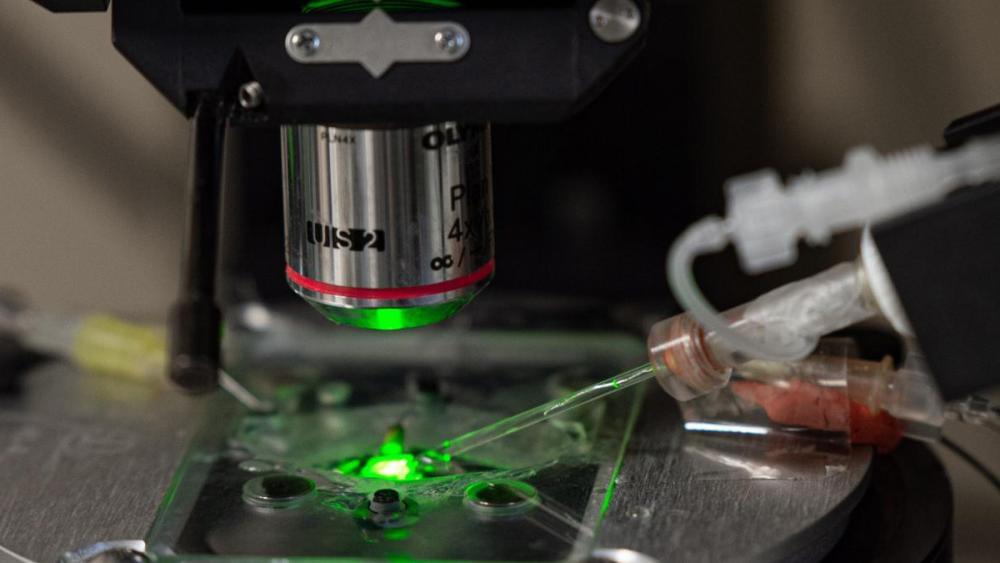The genome-editing technology can be supercharged by artificial intelligence—and the results are already being felt.



Summary: Researchers have developed a new method to profile gene activity in the living human brain, offering new insights into neurological conditions like epilepsy. By analyzing RNA and DNA collected from electrodes implanted in patients’ brains, the study linked molecular data with electrical recordings of seizures, creating a detailed snapshot of gene activity.
This approach enhances understanding of seizure networks, potentially improving the precision of epilepsy surgeries for patients who don’t respond to medication. Beyond epilepsy, the method could have applications in studying Alzheimer’s, Parkinson’s, and schizophrenia, advancing knowledge of brain disorders at the molecular level.
This is the first symposium of Xapiens at MIT — “The Future of Homo Sapiens”
The future of our species will be majorly influenced by the technical advancements and ethical paradigm shifts over the next several decades. Artificial intelligence, neural enhancement, gene editing, solutions for aging and interplanetary travel, and other emerging technologies are bringing sci-fi’s greatest ideas to reality.
Sponsored by the MIT media lab and the MIT mcgovern institute of brain research.
Full Agenda:
- Openings remarks from Joe Paradiso — https://youtu.be/9bG40ySgE8I
A.W Dreyfoos Professor and Associate Academic Head of Media Arts and Sciences at MIT Director of the Responsive Environments Group.
- Pattie Maes — https://youtu.be/b-16PW9RvJc.

A new study describes an exciting discovery that changes the way we understand human bitter taste receptors. The research has revealed a hidden “pocket” inside one of the body’s bitter taste receptors, called TAS2R14.
This breakthrough could help not only understand how our tongue senses bitterness but also investigate the physiological roles of bitter taste receptors that are expressed extraorally. The work is published in Nature Communications, and was led by Prof. Masha Niv from the Hebrew University of Jerusalem, Dr. Moran Shalev-Benami from the Weizmann Institute, and Dr. Dorothee Weikert from FAU Erlangen.
There are many chemically different molecules that trigger bitter taste sensations, and the body uses a family of 25 receptors to detect them. Interestingly, many drugs also activate this bitter taste system.

The current standard of care for psychosis is a diagnostic interview, but what if it could be diagnosed before the first symptom emerged? Researchers at the Del Monte Institute for Neuroscience at the University of Rochester are pointing toward a potential biomarker in the brain that could lead to more timely interventions and personalized care.
“Establishing such biomarkers could provide a key step in changing how we care for, treat, and offer interventions to people with psychosis,” said Brian Keane, Ph.D., assistant professor of Psychiatry, Center for Visual Science, and Neuroscience at the University of Rochester Medical Center.
Keane recently co-authored an article in Molecular Psychiatry that identifies how MRI scans could reveal brain differences in people with psychosis.
From brain implants that allow paralyzed patients to communicate to the wearable devices enhancing our capabilities, brain-computer interfaces could change the way we use our minds forever.
——-
Like this video? Subscribe: https://www.youtube.com/Bloomberg?sub_…
Get unlimited access to Bloomberg.com for $1.99/month for the first 3 months: https://www.bloomberg.com/subscriptio…
Bloomberg Originals offers bold takes for curious minds on today’s biggest topics. Hosted by experts covering stories you haven’t seen and viewpoints you haven’t heard, you’ll discover cinematic, data-led shows that investigate the intersection of business and culture. Exploring every angle of climate change, technology, finance, sports and beyond, Bloomberg Originals is business as you’ve never seen it.
Subscribe for business news, but not as you’ve known it: exclusive interviews, fascinating profiles, data-driven analysis, and the latest in tech innovation from around the world.
Visit our partner channel Bloomberg Quicktake for global news and insight in an instant.

In a new work, a team from the University of Pennsylvania tracked the impact of alcohol consumption from the age of 20 on brain health and came to disappointing conclusions.
UNIVERSITY PARK, Pa. — Binge drinking in early adults can lead to long-lasting and potentially permanent dysregulation in the brain, according to a new study in mice, led by researchers at Penn State. They found that neurons, cells that transmit information in the brain via electrical and chemical signals, showed changes following binge drinking were similar in many ways to those seen with cognitive decline.
These findings, published in the journal Neurobiology of Aging, reveal that binge drinking early in life may have lasting impacts that are predictive of future health issues, like Alzheimer’s disease and related dementias, the researchers said. The work could inform the development of therapeutics to help combat these changes — particularly in aging populations who may have given up alcohol decades earlier, according to Nikki Crowley, director of the Penn State Neuroscience Institute at University Park, Huck Early Career Chair in Neurobiology and Neural Engineering, assistant professor of biology in the Eberly College of Science, and the leader of the research team.
“We know from previous studies that there are immediate effects of binge drinking on the brain, but we didn’t have any sense of if these changes were long-lasting, or reversible over time,” said Crowley, who is also an assistant professor of biomedical engineering and of pharmacology. “We were interested in understanding if binge drinking during early adulthood may have lasting consequences that are not revealed until later in life — even if drinking had stopped for a very long period of time. This allows us to consider the effects of alcohol on an individual’s holistic health, in terms of their entire life history.”

Summary: Researchers have developed a breakthrough system to deliver large therapeutic molecules into the brain, overcoming the challenges of the blood-brain barrier. The innovative blood-brain barrier-crossing conjugate (BCC) platform utilizes a biological process called γ-secretase-mediated transcytosis to safely transport drugs like oligonucleotides and proteins into the central nervous system via intravenous injection.
In mouse models and human brain tissue, the system effectively silenced harmful genes linked to diseases such as ALS and Alzheimer’s without causing significant side effects. This advancement could revolutionize treatments for neurological and psychiatric disorders, solving a critical challenge in brain research.

Oxford Nanopore Technologies and Wasatch BioLabs have joined forces to develop a groundbreaking direct whole-methylome sequencing (dWMS) product. This collaboration addresses the limitations of traditional methylation sequencing methods, such as bisulfite sequencing and methylation microarrays.
By leveraging Oxford Nanopore’s advanced sequencing technology and Wasatch BioLabs’ proprietary methylation assays, the partners aim to offer a more comprehensive and accurate approach to studying epigenetic modifications. dWMS eliminates the need for harsh chemical treatments and PCR amplification, reducing biases and improving genome-wide coverage.
This innovative technology has the potential to revolutionize epigenetic research, providing valuable insights into the role of methylation in various biological processes and diseases. The collaboration between these two companies is poised to drive significant advancements in genomics and precision medicine.
Watch Dr. Ben Goertzel, CEO of SingularityNET and ASI Alliance, discuss the path to beneficial Superintelligence.
Recorded at the Superintelligence Summit held by Ocean Protocol in Bangkok on November 11, 2024.
SingularityNET was founded by Dr. Ben Goertzel with the mission of creating a decentralized, democratic, inclusive, and beneficial Artificial General Intelligence (AGI). An AGI that is not dependent on any central entity, is open to anyone, and is not restricted to the narrow goals of a single corporation or even a single country.
The SingularityNET team includes seasoned engineers, scientists, researchers, entrepreneurs, and marketers. Our core platform and AI teams are further complemented by specialized teams devoted to application areas such as finance, robotics, biomedical AI, media, arts, and entertainment.
Website: https://singularitynet.io.
X: https://twitter.com/SingularityNET
Instagram: / singularitynet.io.
Discord: / discord.
Forum: https://community.singularitynet.io.
Telegram: https://t.me/singularitynet.
WhatsApp: https://whatsapp.com/channel/0029VaM8…
Warpcast: https://warpcast.com/singularitynet.
Mindplex Social: https://social.mindplex.ai/@Singulari…
Github: https://github.com/singnet.
Linkedin: / singularitynet.